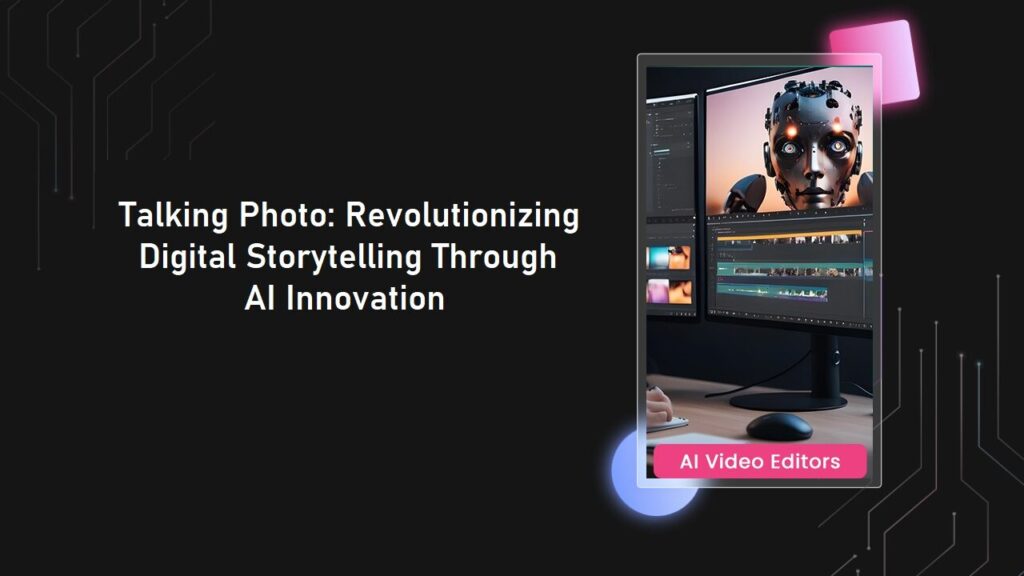
In today’s rapidly evolving digital landscape, creativity and technology intersect in fascinating ways. One of the most compelling innovations is the “Talking Photo” — an AI-powered technology that brings still images to life with speech, movement, and expression. This trend is not just a passing novelty; it represents a powerful leap in how we interact with digital content, with significant implications for photo editing, video creation, and virtual communication.
What Is a Talking Photo?
A “Talking Photo” refers to a still image enhanced by artificial intelligence to simulate speech and facial expressions. By applying deep learning models—often the same ones used in facial recognition and animation—a static face in a photo can be made to talk, smile, blink, or even sing. It’s a blend of facial reenactment and synthetic voice technology that results in surprisingly lifelike animations.
These AI-generated talking photos are now being integrated into apps, marketing tools, video editing platforms, and even educational content. They make it possible to give voice to historical figures, personalize video messages, or enhance online avatars. The possibilities are as limitless as your imagination.
Talking Photo in Video and Photo Editing
For content creators, the “Talking Photo” concept is an absolute game-changer. Whether you’re creating digital avatars, developing engaging social media content, or adding dynamic elements to educational videos, AI-driven talking images offer a new layer of interaction.
With intuitive platforms now available, creators can upload a photo, type or record a script, and generate a video where the image “speaks” naturally. This eliminates the need for expensive video production teams or voice actors, making high-quality video content more accessible than ever before.
Many of these platforms also incorporate tools like the AI Clothes Changer, which allow creators to modify outfits in the photo without manual editing. This is particularly valuable in virtual fashion showcases, e-commerce, and digital modeling—sectors where visual content needs to be both diverse and adaptive.
Applications in AI and Digital Content Creation
The influence of talking photo technology extends far beyond entertainment. In AI-powered customer service, virtual assistants can now be given a friendly, speaking face. In education, historical photos can be animated to deliver information in first-person narratives, bringing textbook content to life. Museums and exhibitions are starting to use talking portraits to offer immersive visitor experiences.
In marketing and advertising, companies are using talking photo tools to personalize promotional content. A spokesperson’s image can be quickly adapted to say the viewer’s name or customize messages in different languages. Combined with AI-powered features like the AI Clothes Changer, businesses can rapidly tailor their content to match seasonal trends, audience demographics, or branding updates.
Ethical Considerations and Responsible Use
As with all powerful technology, there are important ethical questions surrounding the use of talking photos. Consent, privacy, and authenticity must be prioritized. Using someone’s likeness to create speaking images—especially for commercial use—requires clear guidelines and often legal permission. Developers and users alike should commit to transparency and ethical standards.
Fortunately, responsible innovation is on the rise. Many leading platforms are incorporating safeguards such as watermarking, permission verification, and secure storage options to protect both creators and the people represented in the photos.
The Future of Digital Expression
Talking photo technology is still in its early stages, but its trajectory is clear: it’s becoming an essential tool in the arsenal of digital creators, educators, and marketers. As AI continues to evolve, we can expect even more sophisticated features, such as real-time voice modulation, multilingual lip-syncing, and deeper integration with virtual reality.
Tools like the AI Clothes Changer will also become more refined, allowing users to change not just outfits but entire environments and styles with a click. This convergence of creativity and machine learning is democratizing high-end content creation and reshaping how we tell stories in the digital age.
Final Thoughts
The talking photo is more than just a novelty—it’s a powerful storytelling medium driven by artificial intelligence. From enhancing educational tools and virtual experiences to transforming digital marketing and social content, this innovation is opening new doors in visual communication.
As we continue to explore and responsibly implement these tools, we step closer to a world where creativity knows no boundaries. The future of digital storytelling is here—and it talks.